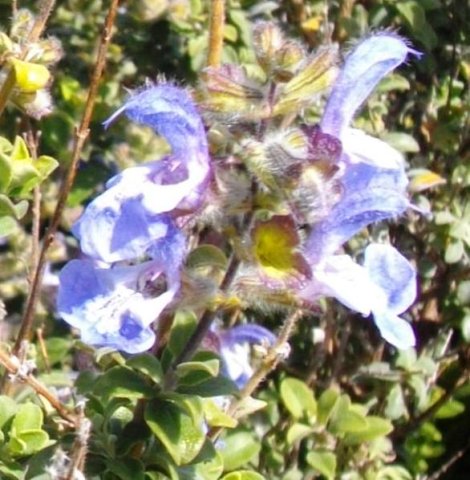Salvia africana-caerulea

Salvia africana-caerulea, the blue sage, is a strong-growing aromatic shrub of up to 2 m in height. The leaves are pale-green above, hairy below, soft, obovate and sometimes toothed.
The flowers appear in whorls all year round, apart from autumn. The colours vary from blue, to mauve or pink, sometimes with darker spots. The calyx is funnel-shaped, softly silky and enlarges as the fruit develops. The corolla is two-lipped, with the upper one hooded and hairy, the lower one distinctively marked close to the throat. The stamens have a complex structure accommodating visiting insects.
Blue sage is found from the Cape Peninsula into the close-lying mountainous areas and up the west coast of the Western Cape. It grows on coastal dunes and rocky hills.
Various indigenous population groups have found uses for this and several of the other Salvia plants, both medicinally and as a condiment for flavouring their food (Manning, 2009; www.plantzafrica.com).

